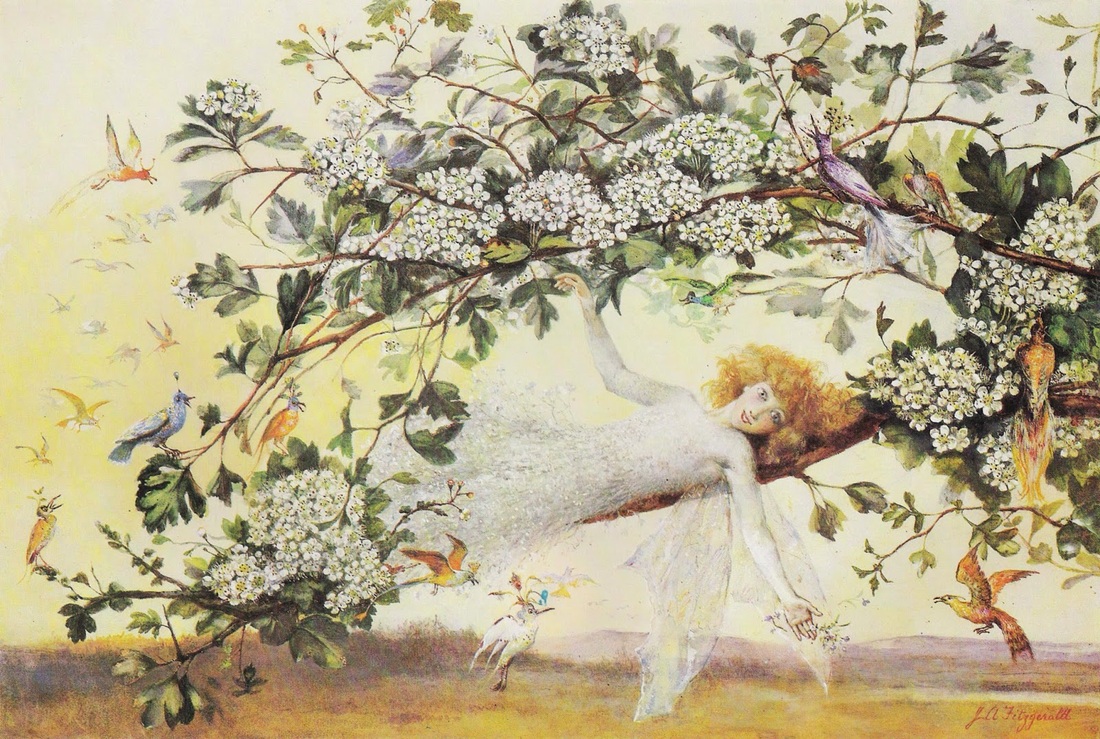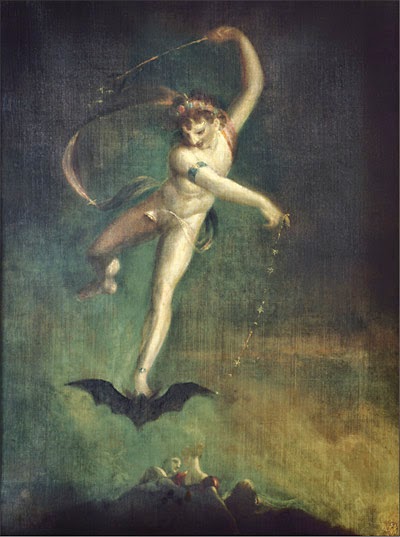The next group of images cluster around Ariel’s other song, “Where the bee sucks, there suck I” (5.1.88); like in our last group, however, the two images work to present very different interpretations of Ariel’s character and the play. John Anster Fitzgerald’s Ariel (c. 1858) focuses entirely on the sentimental, beautiful aspects of this song whereas Henry Fuseli’s Ariel (1800-1810) focuses instead on the darker, more macabre lines of this song. The song is worth quoting in its entirety to flesh out this difference:
Where the bee sucks, there suck I:
In a cowslip's bell I lie;
There I couch when owls do cry.
On the bat's back I do fly
After summer merrily.
Merrily, merrily shall I live now
Under the blossom that hangs on the bough. (5.1.88-96)


 RSS Feed
RSS Feed